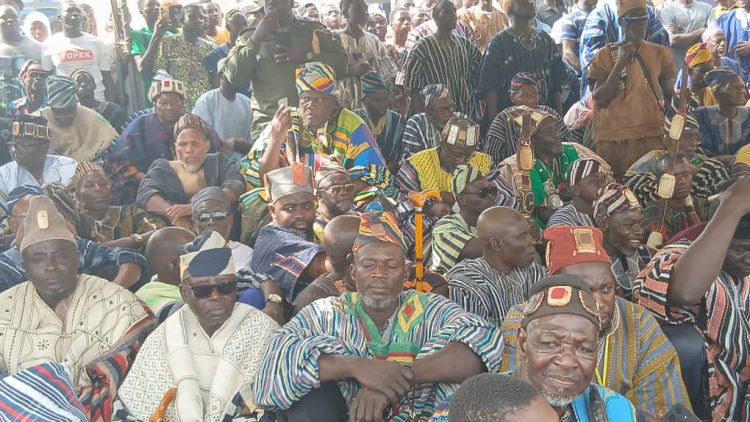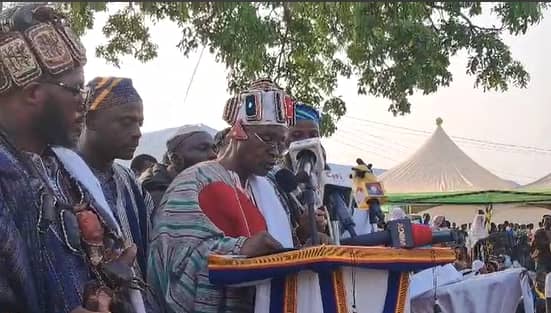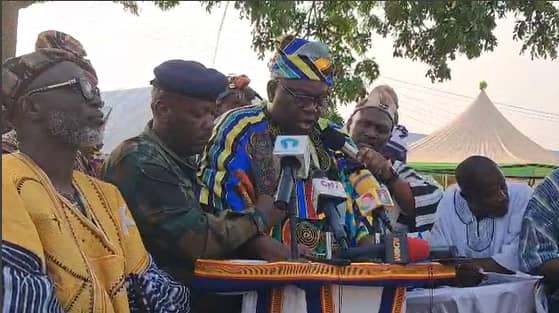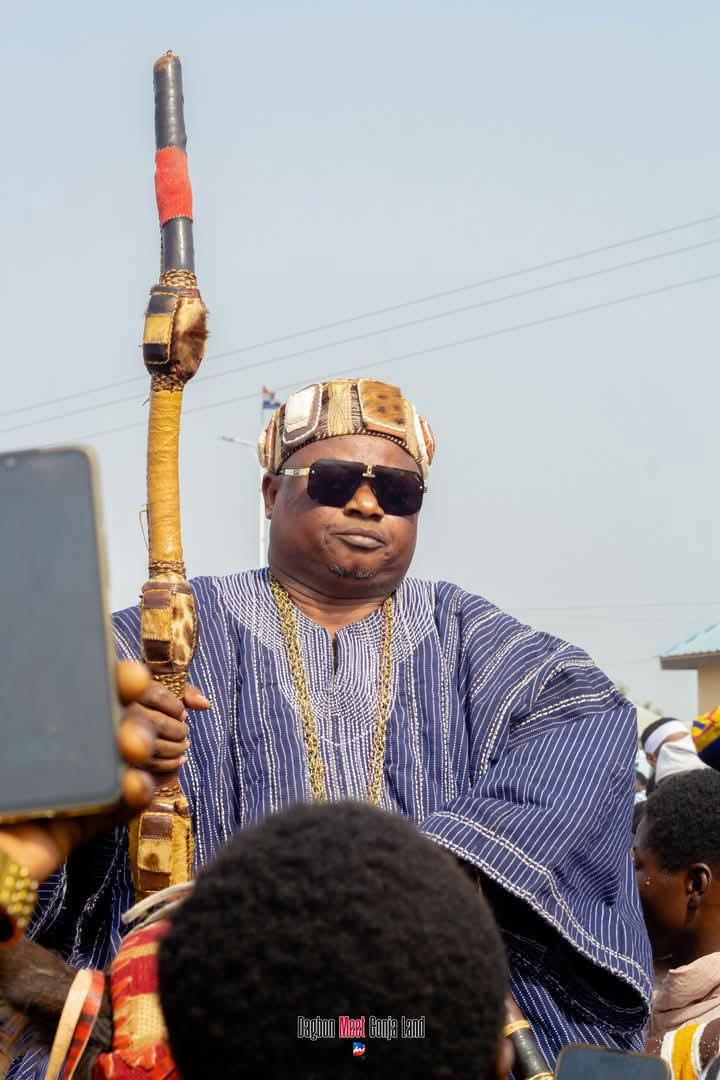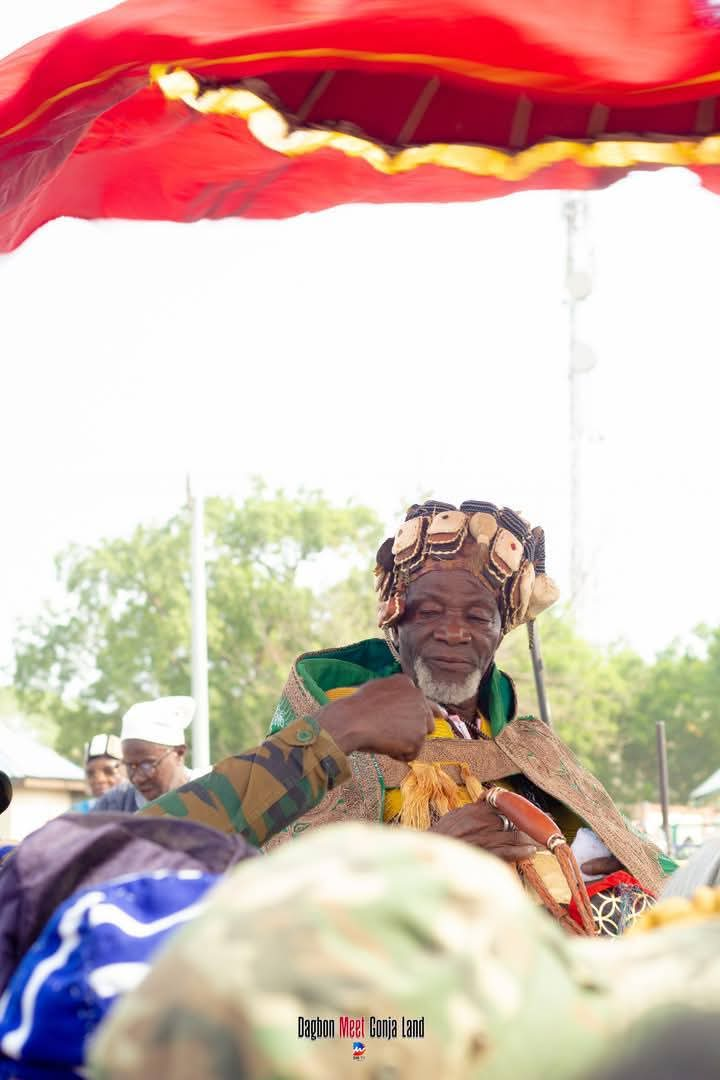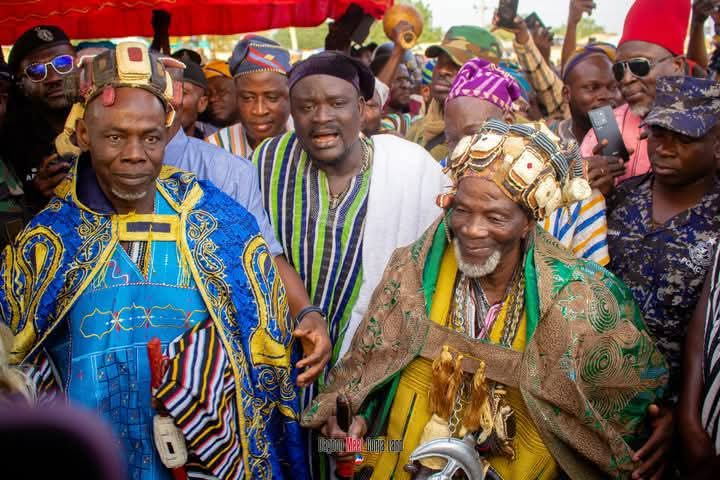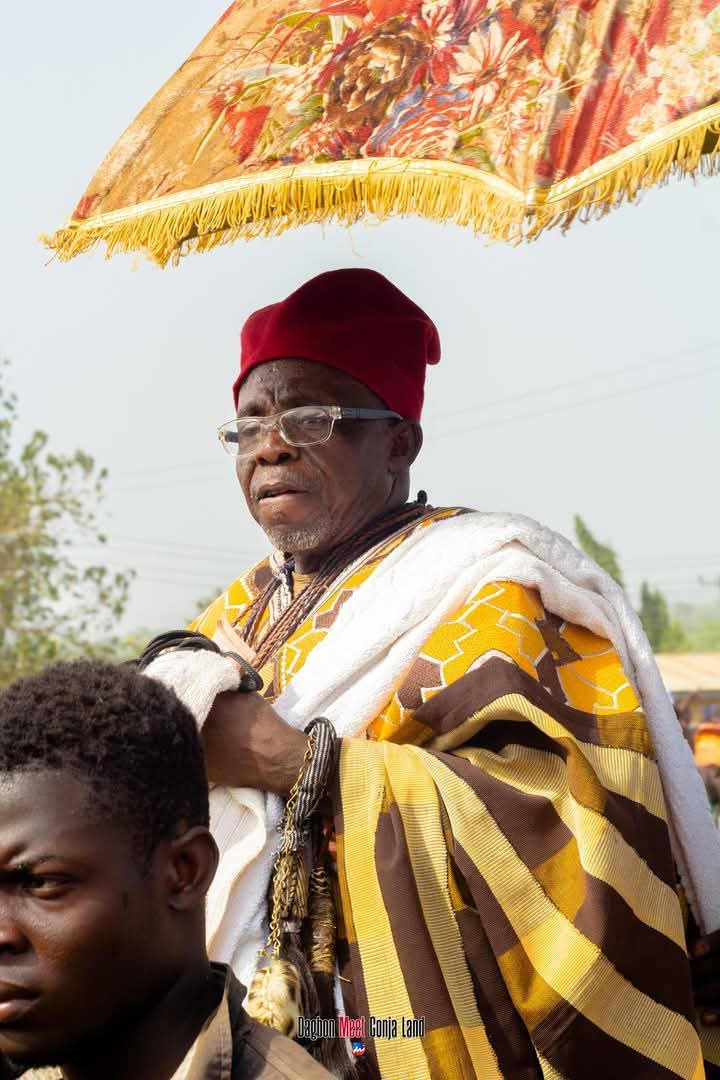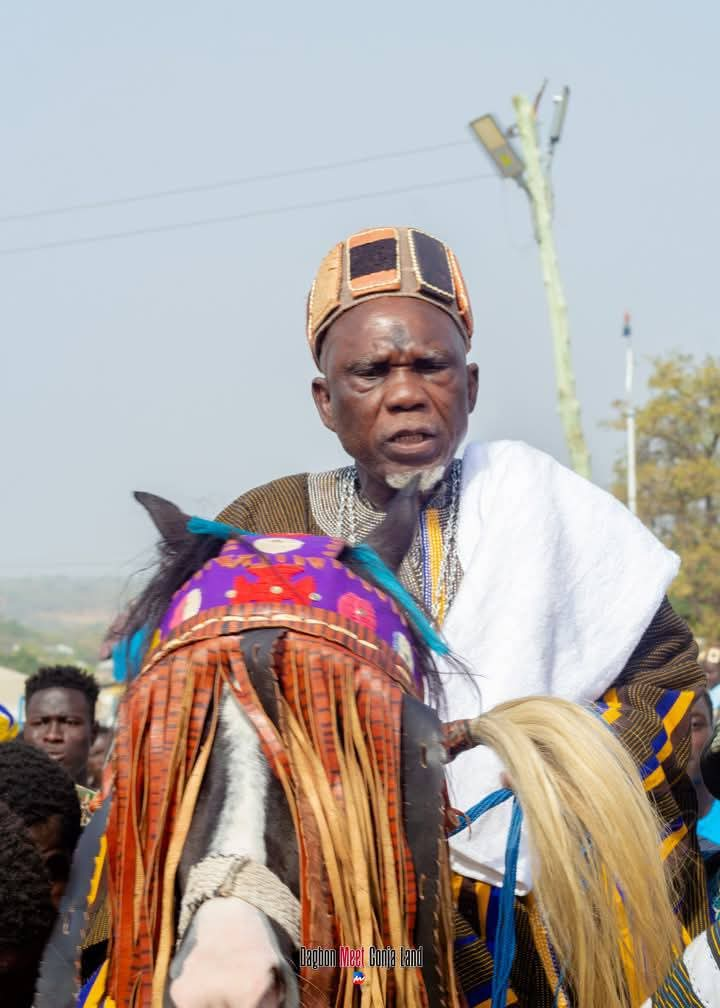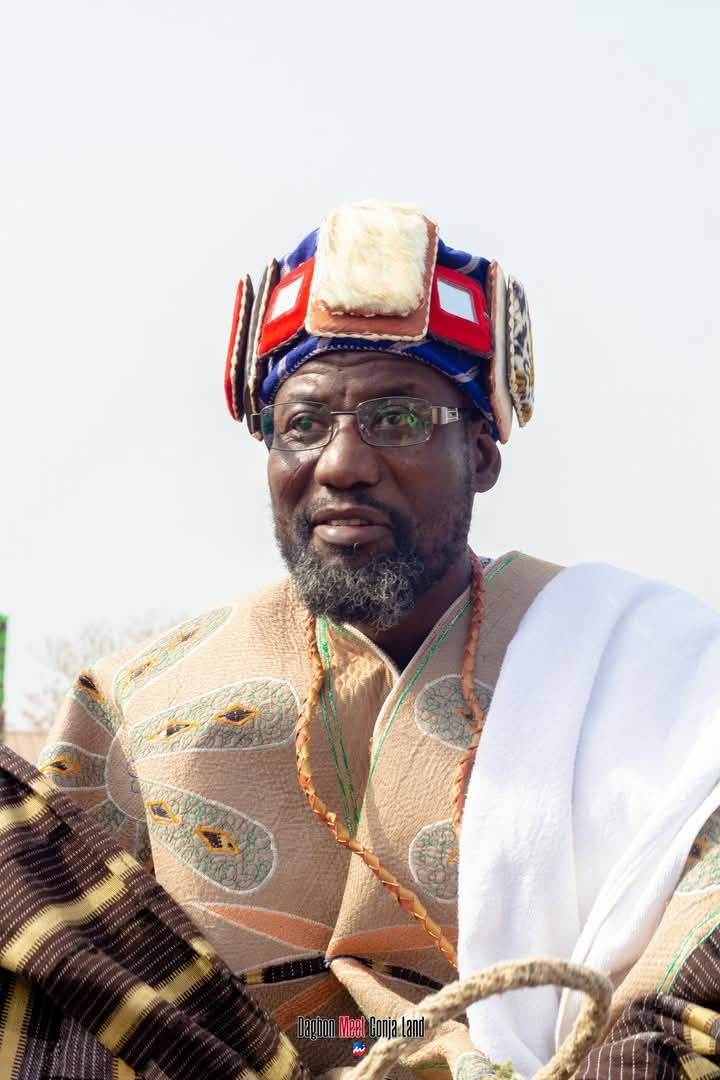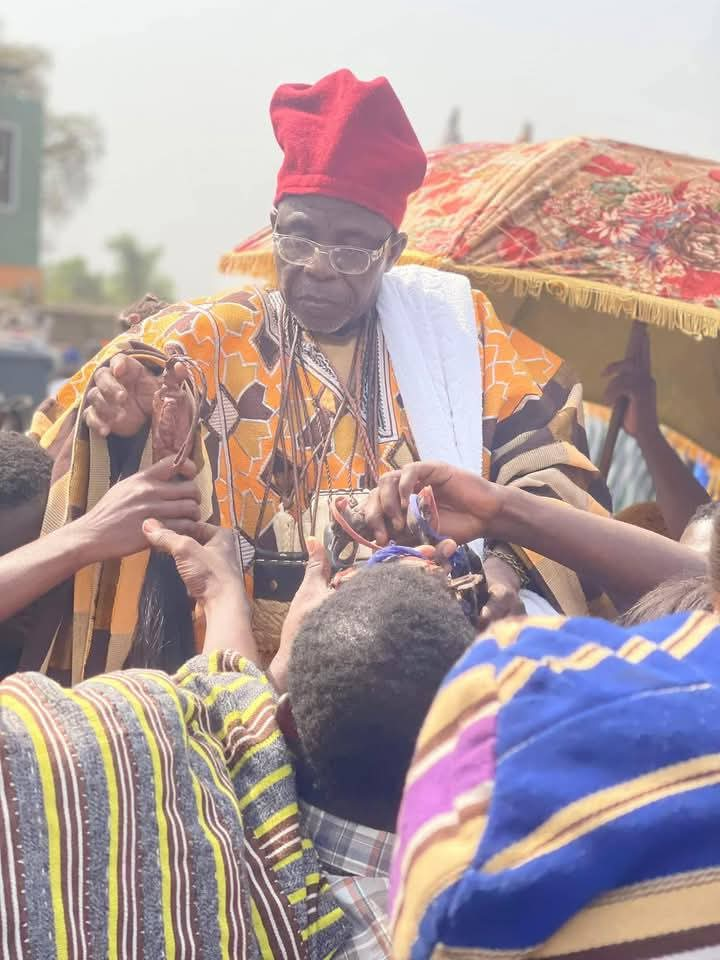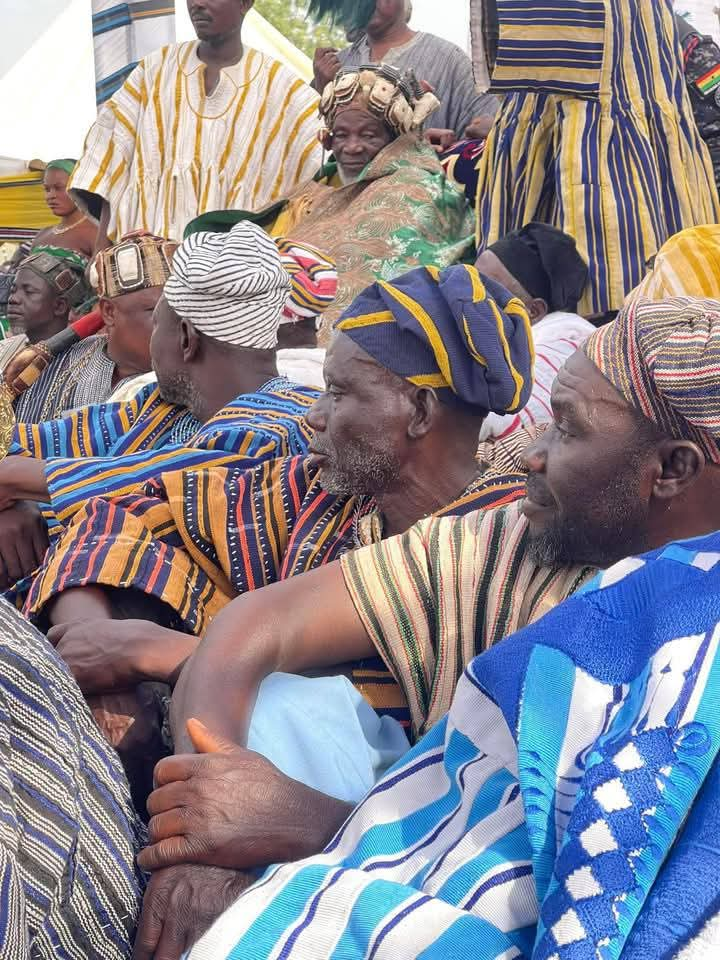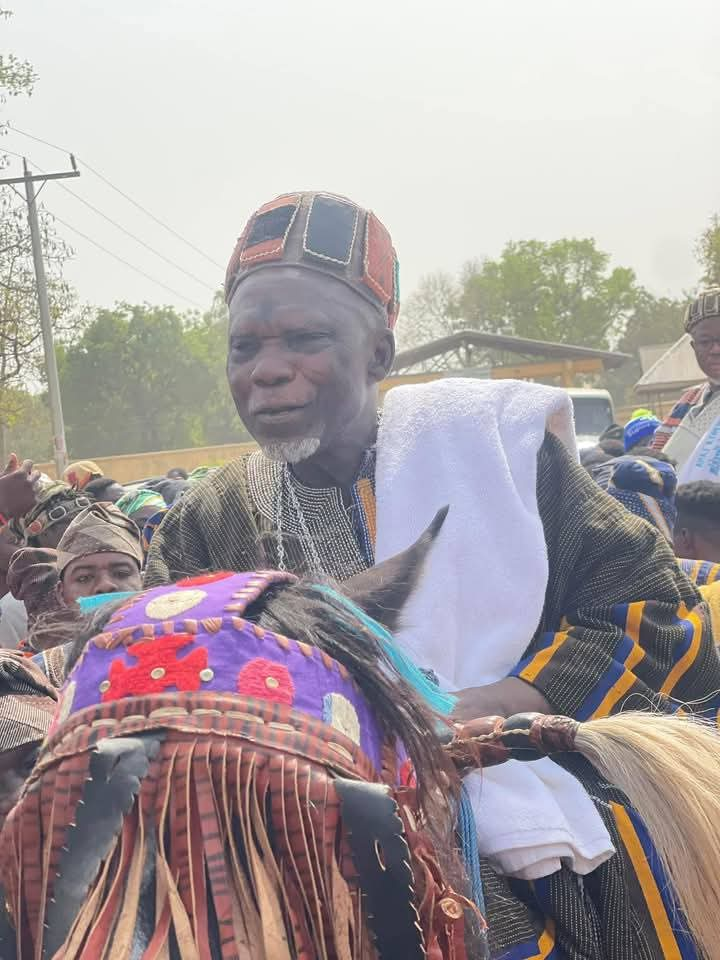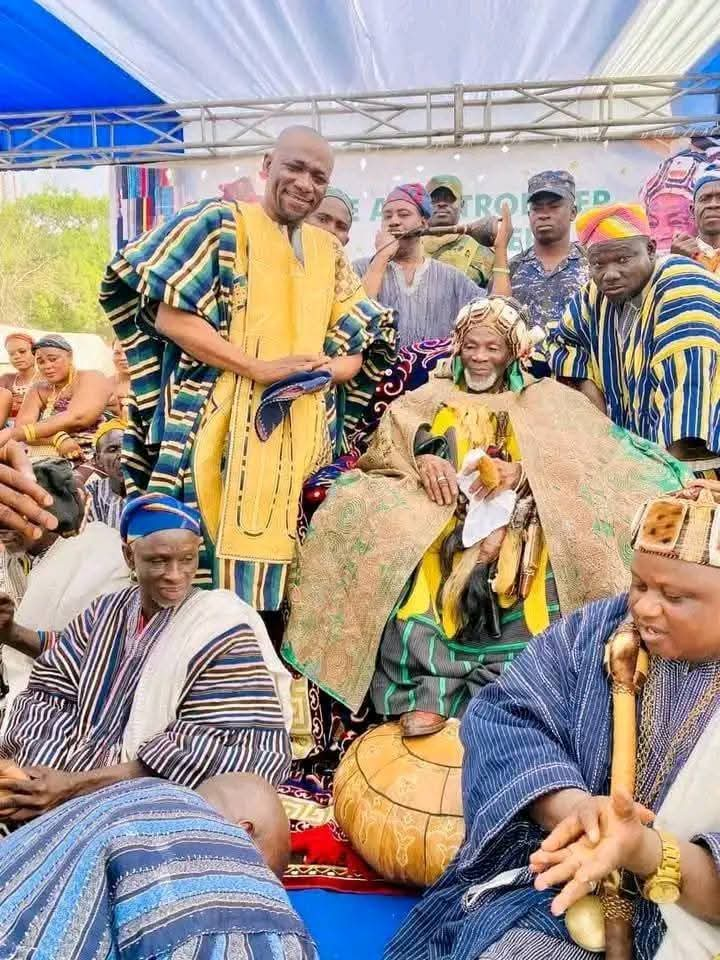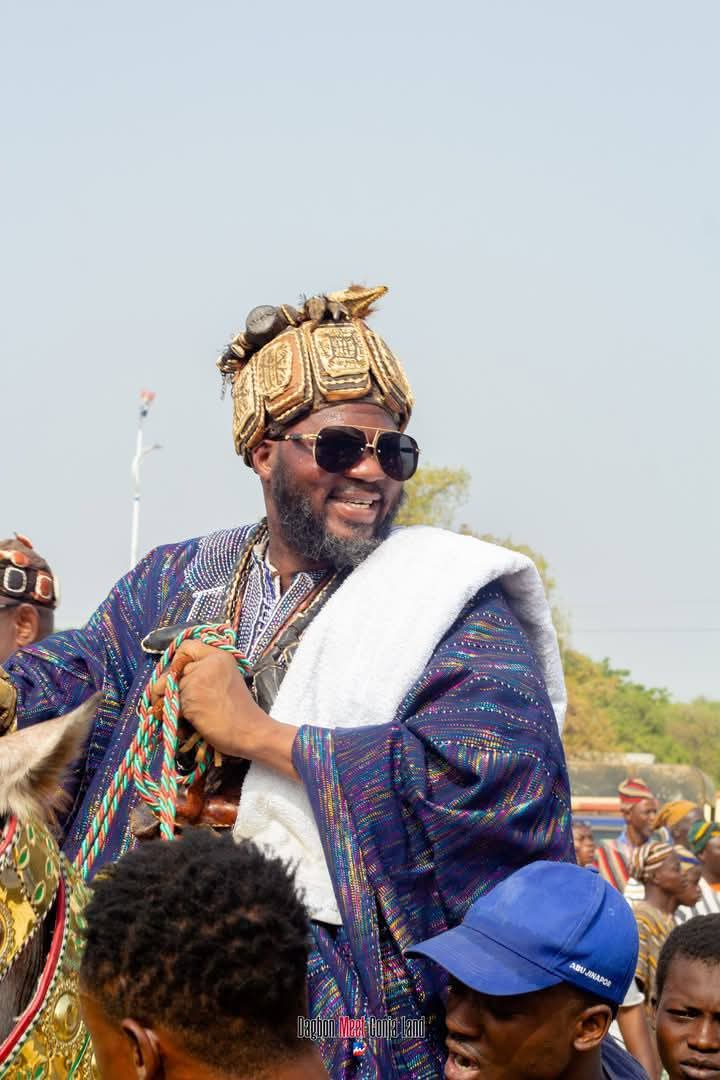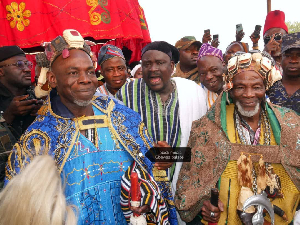Category: Arts-Culture-Music
-

The Celebration of Fire Festival:Prospects & Tourism Potentials for the Gbewaa Kingdoms(By Fuseini Yakubu)

Fuseini Yakubu
Introduction.
This article presents the celebration of Fire Festival in the three main Gbewaa Kingdoms in Northern Ghana. Fire Festival is an annual festival for the people of the Gbewaa Kingdoms. It’s celebrated on the 9th day of the month of fire “Bugum Goli”. The lunar month of Fire Festival “Bugum Goli”, is the first month and beginning of a new year, just like January which is the first month of a new year.
The article will also discuss the prospects and tourism potentials for the celebration of Fire Festival, if it’s well packaged and marketed. In recent times, the way Fire Festival is being celebrated mostly by the youth, sends wrong signals to the people outside the three main Gbewaa Kingdoms. As such, people have negative perception about the celebration of the Fire Festival. This article is to educate readers on the significance of the Fire Festival.
The Genesis and Evolution of the Fire Festival.
The Fire Festival it is believed is the first Festival for the People of Dagbon (Modern Dagbon, Nanung & Mamprugu). The aboriginal Dagbamba are believed to be descendants of prophet Noah.
Fire Festival is a custom emanated from Noah’s time in commemoration of the day the Ark of Noah “rested on Mount Ararat and the people in the Ark came and made fires7”. Tamakloe also, considers the fire festival of the Dagbamba as a custom emanated from Noah’s time in commemoration of the day the Ark of Noah “rested on Mount Ararat and the people in the Ark came and made fires7”. Dagbamba tradition attributes the significance of the fire festival to Prophet Noah; they assign different reasons for the festival.
According to the tradition, when Prophet Noah was about to set out with his Ark, one of his sons got missing. A search for him was commenced. The search continued until night when the son was not yet found. Searching lights were lighted to look for him.
The significance of the Fire Festival therefore is to commemorate the search for Prophet Noah’s son. Whatever the reason, the tradition agrees that the Fire Festival relates to Prophet Noah and the Great Flood.
Furthermore, the lunar month for the Fire Festival “Bugum Goli” is the beginning of the year in the three sister Kingdoms: Dagbon, Mamprugu and Nanung.
The same month “Muharam” is the beginning of the year in Arabia. New Year resolutions are made during the festival and also pray to God for protection, guidance, and prosperity. As part of the celebration, they cut bits and pieces of cooked food and put the same short on dividing walls in their homes.
These pieces of cooked food are supposed to be food for their ancestors and deceased family members. They believed that the spirit of their ancestors visits them on this important day. As such, they have to serve them with food and meat. Every poor home in Dagbon will slaughter fowls for this important day.
The Dagomba, like the Arabs, have twelve lunar months in a year. Even though the names of their months differ, their year begins with the same month. They also end the year with the same month. The number of days in their months is equal. A month is either thirty or twenty-nine days.
The Celebration of Fire Festival.
Fire festival is celebrated on the 9th day of the month “Bugum Goli”. Sacrifices are performed at individual homes in the evening. The meat is then used to prepare meals in the evening. Bunch of grasses are tied for the celebration.
The Overlords of Dagbon, Mamprugu and Nanung will by tradition, formally inform their chief Imams as he and his team of other Muslim clerics have an important role to play in the festival.
The festival is observed at night. The Overlords will light the fire to mark the beginning of the celebration. Until the Overlords light the fire before any other person could do so.
The Overlords and all participants will be in their War Regalia. They also exhibit their weapons and dancing to the tune of War drums and singing of War and other traditional songs. They walk from the east to the west where the remains of Grass bunches are thrown away and branches of herbs are cut by all participants.
Participants move with the branches of the herbs first to the chief’s palace for fortification. They will then continue to the Chief Imam’s house for same fortification.
It is believed that the participants are directly fortified as the spiritual concoction touches their bodies. The herbs are sent to the individual homes which they boiled and used to bath children and the weak who could not participate, to be fortified. The fortification is for protection against any calamities in the new year.
It’s important to note that before the advent of Islam, traditionalists used to prepare herbal concoctions for fortification of the auras or bioenergetic bodies of the celebrants against any evil or against the adverse effects of any impending calamity. With the advent of Islam in the Gbewaa Kingdoms, the Chief Imams have since assumed this role giving an Islamic touch to the preparation of spiritual concoction for the fortification.
On the 10th day of the month “Bugum Goli” the Chief Imam and other clerics engage in private and employing Islamic methods of divination, are able to forecast, foretell or prophesy events that would unfold in the new year.
If some aspects of the forecast happen to do with any impending calamity that could negatively impact members of the community, they also prescribe what sacrifices are there to be made either by heads of the individual families, the Kings or their paramount chiefs in order to seek divine interventions so as to avert its societal impact.
Citizens in the Gbewaa Kingdoms are expected to adhere to the precautions and prescriptions associated with the esoteric induced forecasting made by the Chief Imam and his team of other Muslim clerics vested in the Islamic mystical sciences . This mark the end of the Fire Festival.
Socio-Economic and Spiritual Benefits of the Fire Festival.
- Participants or celebrants gets fortified at least for a year through the bathing of the spiritual/herbal concoction.
- Celebrants excise their bodies through drumming, dancing, and walking for some few kilometers.
- Celebrants are able to socialize with others and make new friends during the celebration.
- Youth gatherings, such as Jams and other traditional dances are also held after the celebration.
- Food vendors and other entrepreneurs such as butchers, provision shops, local poultry sellers among others record high sales during the festive season.
- Special prayers and sacrifices are also observed for protection and prevention of calamities/disaster that may strike
- the kingdoms.
In conclusion, the Fire Festival, if it is well packaged and promoted,as an annual cultural tourism event could attract tourists and possibly investments that could inure to the socio-economic development benefit of the Gbewaa Kingdoms.
Contact Fusheini Yakubu (Research-Oriented Historian),Tel: 0243418562/0202833838,Email: millysdec@gmail.com
BIBLIOGRAPHY
Alhaj Abdulai (Bimbilla Lung-Naa), 2008, oral literature on the advent of Naa Gmantambu to Nanung.
Bagli Naa Mahama Wumbei Mahami, 2013, oral literature on the aboriginal Dagbamba.
Fusheini Yakubu, 2013, History of the Gbewaa States Part I New Edition published by GILLBT Printing Press, Tamale.
Fusheini Yakubu, 2022, History of the Gbewaa Kingdoms New Edition published by Workbook Press LLC USA.
Ibrahim Mahama 2004, History and Tradition of Dagbon, published by GILLBT Printing Press, Tamale.
Tamakloe, E. F. 1931 A Brief History of the Dagbamba People (Accra, Government Printer).
-

#BlackExcellence in Architecture: Driving Cultural Representation
DUBAI, United Arab Emirates, January 25, 2024/ — Shaping our physical environment, creating a sense of identity and place, and supporting economic development are but a few of the functional purposes of architecture. Architects play a critical role in providing places for people to live and work, improving the quality of human life and supporting the aesthetics within a designed environment.This year’s Global Black Impact Summit (GBIS) { https://GlobalBlackImpact.com/} – taking place in Dubai on February 27, 2024 – will explore the achievements of Black architects and designers, whose work serves as a symbol of culture, society, and development. Architects shape the world we live in, casting an emotional impact on people and changing our perception of space. Serving as the first Black architect to become a member of the American Institute of Architects (AIA) in 1923, the work of Paul R. Williams resulted in his bestowment of the institution’s prestigious Merit Award for his design of the MCA building in Beverly Hills, California. Williams’ impressive oeuvre encompasses the design of the homes of Frank Sinatra, Lucille Ball, and Lon Cheney, to name a few.
Centered around the theme, ‘Black Excellence: Unleashing the Unexplored Potential for Global Unity’, this year’s summit underscores the value of innovation, inspiration, and authenticity.
Known for her lavish use of form, straddling the line between openness and utility, Norma Merrick Sklarek’s notable works include the U.S. Embassy in Tokyo and the Terminal One station at the Los Angeles International Airport.In addition to becoming the first woman licensed as an architect in New York and California, Sklarek became the first African American woman member of the AIA and the first to co-own an architectural firm.As a medium, architecture provides designers an opportunity to express their artistry on a larger scale than other traditional artists. The accessibility and visibility of their work offers a greater influence on a wider population and for much longer a term.
As such, the transcontinental scope of architect and designer, Pascale Sablan, includes notable buildings such as the Museum of the Built Environment in Saudi Arabia and the Bronx Point project in New York.Her work on commercial, cultural, and residential buildings has resulted in Sablan becoming the recipient of numerous awards including the 2018 Pratt Alumni Achievement Award, Emerging New York Architect Merit Award, and the NOMA Price for Excellence in Design.Renowned for his innovative and sustainable architectural style, Burkinabe-German architect, Diébédo Francis Kéré became the first African to receive the prestigious Pritzker Architecture Prize. Kéré’s portfolio, which includes civic infrastructure and temporary installations, is notable for its innovative use of local resources and participatory design methods.
His work includes the Gando Primary School in Burkina Faso, the National Park of Mali, and the Serpentine Pavilion in the UK. Kéré’s focus on social initiatives has been celebrated for embodying the values of the communities where he works, driven by a commitment to environmental understanding and service to humanity.Architectural excellence and the influence of Black designers in the field will be a focus-point during this year’s GBIS event, which will highlight the contributions, achievements, and influence of Black architects from all over the world.
The Summit will unite participants under the common goal of celebrating and supporting innovation and inclusivity in the realm of architecture, promoting equal opportunities and inspiration to Black creatives and trailblazers.Global Black Impact Summit 2024
The Global Black Impact Summit is an annual event – organized by Energy Capital & Power – that seeks to celebrate the achievements of the Black community, promote excellence, and explore untapped potential across various fields. This year’s summit is set to be a transformative experience, featuring influential speakers, engaging panel discussions, and networking opportunities that encourage attendees to reach new heights.
To secure your spot at this prestigious gathering, register promptly at www.GlobalBlackImpact.com.
Distributed by APO Group on behalf of Energy Capital & Power.SOURCE
Energy Capital & Power -

Weaving the Culinary Tapestry: A Journey through the African Diaspora
DUBAI, United Arab Emirates, December 28, 2023/ — Food is a unique storyteller, a cultural bridge and a carrier of traditions. As a result, the culinary traditions and rich tapestry of cuisines belonging to the global Black community have played a valuable role in contemporary culture.
These traditions not only illustrate the inspiration, creativity and shared heritage of Black people, but also serve as a common thread that connects diverse cultures and geographies. From the shores of West Africa to the vibrant streets of the Caribbean, the flavors, techniques and dishes of the African diaspora have transcended borders, uniting people from across the globe. The Global Black Impact Summit (GBIS) — which unites and celebrates the achievements of the global Black community on February 27, 2024 in Dubai — will explore the influence of the African diaspora on a wide range of industries, such as the culinary arts.
Africa: The Roots of Flavor
An exploration into the culinary heritage of the global Black community begins with the roots of African cuisine. The continent’s diverse landscape and myriad cultures have given rise to a vast array of ingredients, cooking methods and flavors.In West Africa, staples like yams, okra, plantains and an array of vibrant spices are central to the local cuisine, with traditional local dishes including Jollof rice, Fufu – made from cassava root – and Egusi soup.
In South Africa, the fusion dish Bobotie – a spiced minced meat bake with an egg-based topping – reflects the country’s historical influences, blending Dutch, Malay and Indian flavors. Central Africa contributes to this culinary tapestry with dishes like Saka-Saka in Congo, made from cassava leaves cooked with spices, and Poulet Nyembwe in Gabon, featuring chicken in a rich red palm nut sauce. These dishes highlight the use of local ingredients and establish the roots of traditional African cuisines across regions.
The African Diaspora and a Fusion of Cultures
Starting from the 16th century, the transatlantic slave trade facilitated the movement of millions of Africans to various parts of the world, including the Americas and the Caribbean. These journeys brought with them longstanding culinary traditions, which over time, evolved and adapted to the ingredients and resources found locally, while preserving the foundations of authentic cooking methods and flavors.In the Caribbean, the fusion of African, indigenous and European culinary traditions and techniques gave birth to Creole cuisine. Dishes like Gumbo — a hearty stew served over rice and Callaloo — a leafy green stew — showcase the rich melding of influences.
They tell the story of a resilient people who had to adapt and create new traditions, while preserving their roots. In the United States, African Americans developed Soul Food, a cuisine that celebrates their enduring connection to their African heritage. Dishes like collard greens, a flavorful leafy green dish, cornbread and fried chicken, stand apart from traditional African dishes. Yet they provide more than just sustenance; they serve as a celebration of cultural resilience, warmth, protection and identity.
The influence of the African diaspora on global cuisine is undeniable. Dishes like Acarajé in Brazil – a stuffed fritter sold and eaten as street food – finds its roots in the Yoruba people from Nigeria, Benin and Togo, while Ackee and saltfish – Jamaica’s national dish – was initially brought to the Caribbean from Ghana and stems from the name for the Akyem people. These examples reflect how the diaspora has enriched culinary traditions around the world and are a testament to its enduring impact on food and culture.
Pioneers and Innovators in the Culinary World
Throughout history, pioneering Black chefs have broken barriers in the culinary world. In the US, renowned chefs like Edna Lewis and Patrick Clark paved the way for the next generation of Black chefs to innovate and shape the world of food. Chef Marcus Samuelsson, an Ethiopian-born Swedish-American, is renowned for his culinary empire that spans from Harlem to Sweden.
Kwame Onwuachi, a Nigerian-American chef, has left his mark on the culinary scene with a background that includes training in the world’s top kitchens. Sheldon Simeon, a Filipino-Black chef, celebrates the fusion of two cultures by exploring the ancestral roots of Hawaiian cuisine.
GBIS 2024 strives to recognize and celebrate the achievements of Black individuals across industries, with a view to creating a more diverse and inclusive professional landscape. Just as culinary traditions continue to evolve and innovate, the Summit aims to unleash the full potential of the global Black community and explore the vast array of traditions and heritage associated with the African diaspora.
Distributed by APO Group on behalf of Energy Capital & Power.SOURCE
Energy Capital & Power -

About the Much Publicized Client Eastwood’s ‘Death’
Contrary to various online reports that Hollywood Cinema Legend Client Eastwood is dead,a fact Check report filed on Wednesday,October 18,at 11.30 GMT by Yahoo Entertainment online’s Izz Scott LaMagdeleine says the internet should be ignored and that there is no truth in it.
Indeed if there is any Hollywood cinema/movie star who over his long career had left an indelible mark in the minds of millions globally and footprints on the sand of cinematography time,that is,Client Eastwood.
On the African continent today only the surviving old folks who were his funs during the 1950s and 60s when he was the most popular star in then cinematography entertainment landscape.
His most popular movie titled, “The Good,the Bad and the Ugly” comes to mind when mention of him is made.
Now for how Yahoo Entertainment story fact check could being back smiles on the faces of devastated funs,read on
Oct. 13, 2023, YouTube channel Military News published of a video that “claimed actor and director Clint Eastwood had died.”
The clip’s title read, “5 Minutes Ago / Clint Eastwood Died on the way to the hospital / Goodbye Clint Eastwood.” The video had been viewed over 117,000 times on Military News’ YouTube channel at the time of this writing. We also found Facebook posts that linked to the video.
The claim was false.
The video began:
With heavy hearts, we regrettably inform the world of the devastating loss of the iconic and beloved figure, Clint Eastwood. It is with a profound sense of grief that we share the news that Mr. Eastwood, a towering presence in our lives, passed away at the age of 93.
However, Military News is not a reputable source of news about celebrity deaths. At the time of this writing, the channel had posted death hoax videos about actor Denzel Washington and singer Randy Travis within the previous two days.
Furthermore, had Eastwood really died, reputable news publications, such as The Associated Press, would have memorialized him with obituaries on their websites. That had not happened at the time of this writing.
We also found an article from MediaMass about the “news of actor Clint Eastwood’s death.” We’ve previously covered death hoaxes about actor Tim Curry and TV host Steve Harvey that were linked to the website.
MediaMass describes its articles as satire. A page on its website says, “The website mediamass.net is the medium of our satire to expose with humor, exaggeration and ridicule the contemporary mass production and mass consumption that we observe.”
We’ve previously fact-checked other death hoaxes about Eastwood, including in 2017 and 2022. We’ve previously fact-checked similar false rumors about the deaths of celebrities, including actor Josh Peck, actor Sam Elliot, and singer Celine Dion.
Sources:
“Https://Twitter.Com/Clinteastwoo_?Lang=en.” X (Formerly Twitter), https://twitter.com/clinteastwoo_?lang=en. Accessed 18 Oct. 2023.
Ibrahim, Nur. “Actor Josh Peck Died?” Snopes, 5 Sept. 2023, https://www.snopes.com/fact-check/actor-josh-peck-died/.
LaCapria, Kim. “Clint Eastwood Death Hoax.” Snopes, 15 May 2017, https://www.snopes.com/fact-check/clint-eastwood-death-hoax/.
LaMagdeleine, Izz Scott. “Sam Elliott: The Latest Celebrity Targeted by a Viral Death Hoax.” Snopes, 8 Aug. 2023, https://www.snopes.com/fact-check/sam-elliott-death-hoax/.
—. “Steve Harvey Is Still Alive, Despite Online Death Hoax.” Snopes, 5 Mar. 2023, https://www.snopes.com/fact-check/steve-harvey-death-hoax/.
Liles, Jordan. “Celine Dion Death Hoax Misleadingly Rehashes Old Health News.” Snopes, 1 Aug. 2023, https://www.snopes.com/fact-check/celine-dion-health-death-hoax/.
—. “Clint Eastwood Is Not Dead, Despite ‘Sad News’ Facebook Death Hoax.” Snopes, 6 Dec. 2022, https://www.snopes.com/fact-check/clint-eastwood-death-hoax-2022/.
SOURCE
YAHOO ENTERTAINMENT
-

The Etymology of Dagbon’s Damba Festival
By: Mohammed A. Abu
The official endorsement of the rebranding of the 2023 edition of the age-old Damba by the Kingship of Dagbon,in Ghana’s Northern region for peace and development, marked a great turning point in history of the festival. A full programme line up heralded the event making it eventful than all previous ones.
Major side attractions like the first ever football match between historical playmates of the Savulgu and Kumbungu townships to compete for the Gbewaa Damba Trophy,horsemanship competition,Dagbon traditional menu cooking competition among others,indeed enriched the Dagbon Damba flavour.
For when did this most patronized festival in the entire Dagbon’ start,read on now
Background
Even though Damba is today the single largest annual traditional festival in Dagbon celebrated with pomp and pageantry amidst traditional drumming and dancing, it is also said to have Islamic historical antecedents. Thus, it is said to be a fusion of some aspects of Islam and Dagbon’s cultural drumming and dancing in a most harmonious manner.
The Wangara or Mende Clerics factor is said to have predated the Hausa clerics factor so far as the early presence of Muslims in Dagbon is concerned. The introduction of Islam to Dagbon some observers note, widened the cultural dimensions of the Kingdom.
In some written accounts mention is made about the earliest Mende clerics who had settled at Sabari, near Yendi in Dagbon around 1680 and traced their ancestry to Shaykh Sulayman Bagayugu of Timbuktu.
Some oral accounts say among the early day clerics of notable importance who were said to have played significant roles worthy of mention in Dagbon was the Mende cleric who had been elevated to the status of the Imam of the legendary mosque of Sabali (Yeri Na Yamusah Al Wagari. Then also, is the Hausa cleric, Mallam Mahama Zangina al Kashnawi who is also said to have settled at Kamshegu.
The early day emigrant clerics from various ethnic kingdoms and states across pre-colonial West Africa to Dagbon oral and written accounts say adopted tactful diplomacy with their rulers.
They are said to have kept the practice of Islam within their own circles and avoided an openly missionary approach that could draw them into loggerheads with Dagbon’s traditional religionists. They only hoped and prayed that one day someone from a royal setting would embrace Islam and make a strong pitch for Islam in Dagbon and it was to come to pass.
The Zanginan Age, the Golden Age of Islam in Dagbon
The conversion to Islam of one of Dagbon’s Princes by a Hausa cleric, Mallam Mahama Zangina al Kashnawi is said to have been a great turning point for Islam in Dagbon.
The Muslim convert Prince is also reported to have embarked upon trade missions to a number of ethnic states including Wangara land (today’s Mali/Northern Ivory Coast)) Hausa land (in today’s Northern Nigeria) among others.
His deep attachment to today’s Northern Nigeria city of Kano is said to have earned him among Dagbamba(Dagbombas) a nickname,” Mahmadu Kano” (Mohammed Kano) which later was to be an appellation for him corrupted for Dagbani (language of the Dagomba People) as “Mankaanu”.
Oral accounts have it that he scaled up his knowledge in Islam by also schooling in Hausa land before he was to later return to Dagbon to contest for Dagbon Kingship and became King.
He is said to have adopted the name of his Hausa cleric who had converted him to Islam, Mallam Mahama al Zangina (I am going to build in Hausa) from Kastina, Hausa Land in present day Nigeria. His skin name Na Zangina attracts the appellation,” Mankaanu” or better to be put,” Mahmadu Kano”.
The Historic Pact at Sabali Mosque
Both oral and written accounts talk about Na Zangina’s historic visit to Sabali shortly after ascending to the throne. At the legendary Sabali mosque thanksgiving and special prayers was made for Dagbon to witness a golden age.
Another important aspect of the trip was said to be a historic pledge he had made before a number of clerics assembled at Sabali for the prayers including his very own, Mallam Mahama Al Zangina, Al Kashnawi
Na Zangina from oral sources was said to have held a copy of the Holy Qur’an and pledged to make a strong pitch for Islam in Dagbon via making open Islamic missionary activities permissible in the Kingdom for the first time.
Na Zangina’s Administration’s Policy Framework for Islam in Dagbon (1648 – 1677)
Na Zangina during his reign is said to have kept to his word and even went beyond the expectations of the clerics. He is reported to have adopted a most favorable open door policy towards Islam. Under an open door policy, he is said to have gone the extra mile by sending emissaries to the surrounding neighboring ethnic Kingdom and states to invite known Islamic clerics of great repute there to consider relocating to Dagbon.
Notable among the emigrant clerics under Na Zangina’s open door policy were said to be Yidan Kambara, who migrated from Gonja Land. He was said to have been given oversight responsibility of preparing the corpse of a dead Yaa Na for burial. Another emigrant cleric was appointed “Walgu Na” or chief in charge of the preparation of the King’s spiritual fortification concoctions (‘rubutu in Hausa).
The Dagbon’s first Muslim King, oral accounts from current Moleyili sources say thought it worthy of detailing then Prince Andan Sigli to present day Burkina Faso to officially invite a very popular Mende cleric who was to be later known as Yidan Moli in Dagbon’s traditional governance landscape and the eventual principal architect of the Damba celebrated in Dagbon today.
Assigning of Islamic clerics to play certain specific roles deemed important in Dagbon’s traditional governance was first to be introduced by Na Zangina. It is however pertinent to note that Na Zangina, Dagbon’s first Muslim convert, King was the first to give an official touch to Islam in Dagbon as a ruler.
He wasn’t however, the first to introduce Islam to Dagbon for the first time in Kingdom’s history as some might have been made to believe. The presence of Islamic clerics in Dagbon according to both oral and some written accounts far predates the late 17th to early 18th Century reign of Na Zangina.
It is pertinent to also add that, Na Zangina even though was the first Muslim to have ascended to the Kingship throne of Dagbon but he was never Dagbon’s first king as some Arab historical sources tend to have misrepresented him in their writings. Na Zangina was the first 18th King of Dagbon.
Yidan Mole’s entrance into Dagbon and the Birth of Damba
Even though it was Na Zangina who is said to have officially invited Yidan Moli to Dagbon he however unfortunately did not live to see the arrival of the highly respected cleric passed on before Yidan Mole could finally arrive in Dagbon during the reign of Na Binbegu.
Yidan Mole another Mende cleric elders say, was a relative of the Imam of Sabali, Yeri Na Ya Musah al Wangari. Yidan Moli who was an emigrant Islamic cleric residing in then Moshieland (today’s Burkina Faso). His long protracted delay in relocation to Dagbon, elders say, was due to a number of factors and, couldn’t be immediate as Na Zangina had wished for it. Elders say Yidan Mole upon his arrival he first put up with his cousin the Imam of Sabali and later relocated to Kamshegu.
Na Gariba-Yidan Moli Historic Engagement
Upon ascending the Dagbon Kingship Na Gariba I was said to have engaged Yidan Moli as his personal psychic consultant and which had paved the way for the birth of what is today celebrated as Damba
Yidan Moli is said to have been holding the annual Muslim Maulid Anabi (Prophet Muhammad’s birth day celebration) as an individual scholar initiative supported by his followers. He was said to have conceived the idea of giving Damba a Dagbon state level celebration and managed to convince the Na Gariba I to buy into it.
Na Gariba elders say, also had invited Yidan Moli to settle in Yendi but upon realizing the numerical strength of his following and the accommodation problem it could post to the host town, the King decided to grant him land elsewhere to establish his independent settlement and which is today known as Moliyili.
Yidan Mole Sells Damba to Na Gariba I(1700 – 1720)
The benefits of giving the Damba official state status Yidan Moli is said to have told the Na Gariba were that marking Prophet Muhammad’s birth day anniversary would attract Allah’s blessings for his Kingdom, it would serve as a medium for annual renewal of allegiance to him by his paramount chiefs that would also come with gifts, among others that would inure to Dagbon Kingdom’s well-being. Na Gariba, elders say after carefully thinking through the proposal finally embraced it.
The Damba Ecosystem
The word Damba is said to be derived from the Mende root words, “Don” (dance) and “Ba” (big),” Donba” or big dance but corrupted for Dagbani usages as “Damba”. Yidan Moli after getting the buy-in of Na Gariba of celebration of Damba at state level was also said to be very conscious about its sustainably. Thus he specially engineered Damba as a blend the Islamic Maulid a Nabi with Dagbon’s cultural performance and tradition.
Sighting of the Damba Moon
The sighting of the crescent heralds the preparations towards the Damba festivities. Planning on when is most appropriate to be earmarked for the Damba festivities is based on broad based consultation among Yidan Moli and the Kingship and elders.
Somo or Mole Damba
A measure Yidan Moli is said to have adopted towards ensuring the long term sustainability of Damba was the institutionalization of his own edition of the Damba to be celebrated in his camp (Somo or Mole Damba) which could be said to the preceding minor Damba edition.
This entails the slaughtering of the Damba bull to symbolize the birth of the Holy Prophet Muhammad(S.A.W.) and goes with special prayers for the Holy Prophet Muhammad(S.A.W.)
A special side attraction is Yidan Moli himself doing the Damba dance himself and known as ‘SOMO’ or MOLI DAMBA. The King as a goodwill gesture provides Yidan Moli with some foodstuff, money and a bull for the event and his representative is therefore to participate in the ceremonies and merry making. Yidan Moli by tradition sends a fore arm of the slaughtered Damba to the King through his elders.
Na Damba
The Na or King’s Damba which is preceded by the Moli Damba or minor Damba is the major component of the annual Damba festival celebrated as the Kings edition of the event. The major paramount chiefs across the Dagbon Kingdom who serve the King also have their editions of the Damba
The Damba Rice
The rice to be used for the preparation of the Damba feast during the Na Damba form an important integral part of it. This is to the extent that, someone was to be charged with oversight responsibility of growing the rice and presenting to the king through his elders ahead of the Damba festivities
Kor Mori’s Role
The ‘Kori Mori” or the cultivator of grass an idiomatic expression of the rice crop He grows the Damba rice harvest it and sends it to the King in Yendi through his appropriate state elders assigned to receipt and formal presentation to the King.
Kaanshgu near Savulgu in Western Dagbon was where Kor Mori was granted to settle and engage in the cultivation, harvesting and sending of the Damba rice to Yendi as one of the key preparations towards the annual Damba festival.
Cleansing of the Uncooked Damba Rice (“Stones Picking”)
Cleaning of the cultivated rice is another integral function preceding the Na Damba edition. Here a blend of religion and tradition is at its best as clerics do their bit using their hands to ensure that impurities such as stones and chaff are removed from the rice. They pass it on to the traditionalists who uses a calabash to take a portion of the rice for their bit of the cleansing.
Elders intimate that the “Shinkaafa guga gahimbu” translated, “rice cleansing” is only symbolic and constitutes a key ritual preceding the Na Damba during which Yidan Moli and other clerics converge to say special prayers for the King and Dagbon as a Kingdom.
What is more they say, given present day mechanization of rice, the Damba meal rice wouldn’t have that much of stones requiring such a gathering to be able to remove them before it is used for cooking. If it were actually intended to remove stones and impurities from the rice, it would have since completely lost its relevance in this modern day era.
The Damba Sacrificial Cow Ritual
The Damba sacrificial cow is a second and most important symbolic ritual that precedes the Na Damba and intended to mark Prophet Muhammad’s(S.A.W.) birth and outdooring which goes with a sacrificial animal as per Islamic tradition best practice.
While the cow is tethered, Muslim clerics led by Yidan Moli offer special benedictions to the Prophet in circular motion. The doing of with doing three circuits while the sacrificial animal in this case, a bull is tethered to symbolize the sacrificial ram for outdooring the newly born as per Islamic prophetic tradition. His Royal Majesty, Ndan Yaa Naa is to demonstrate his vigour by dancing three times around the cow
It is interesting to note that in the Wala version of Damba, in Ghana’s Upper West Region, His Royal Highness, the Wa Na, is on his part required by tradition, to jump over the cow three times to assure his people that he is in good health to continue with his great task of leading them.
The Muslim clerics component of special prayers goes concurrently with the Dagbon cultural drumming component. The drumming isn’t just an ordinary drum beat but really a drum beat recitation of a verse of the Holy Qu’ ran chapter Al Yassin,” Wa ilaihi turja uun” in response to the prayers of the Muslim clerics.
Recitations of benediction in Arabic to the Prophet Muhammad(S.A.W.) is also recited by the Islamic cleric Yidan Mole, while the traditionalists including the King, repeat same after him. The office of Yidan Mole has been officially charged with oversight responsibility over the Islamic component of the Damba for the past
Kings Dance Performance
The doing of the Damba dance by the King himself component is brief as he emerges during dawn on the Damba day. The King’s Damba presents a most spectacular showcase of Dagbon’s cocktail of diversified cultural performances.
Damba of the Major Paramount Chiefs
Aside the Na Damba at the seat of Dagbon Kingship, we also have the Damba of the major Paramount Chiefs in both Eastern and Western Dagbon, namely the Mion, Karaga, Savulgu, Gulpke Na, Kumbung Na, Tolon Na, among others.
Belkulsi
The wrap up or saying goodbye to the annual Damba festival is termed as the “Belkulsi” which is observed across the kingdom. Visiting homes of elders who had supported in various ways to make the Na Damba a success is intended as a thank you gesture and sign of appreciation which also marks a close of the annual Damba event until another edition arrives again.
Damba in Other States
Damba is not only celebrated by Dagbamba(Dagombas) alone but it is also celebrated among the others in the Mamprusis, Nanumbas, Wala (uses Domba rather than Damba) and Gonjas. Where and when did it start and what others did for its start with the other cultures requires some research and the Research Team of your favourite, Eco-Enviro News Africa, magazine
(An Eco-Enviro News Africa Blog Article)
References
1.A Note on the Early Spread of Islam in Dagomba by Ivor Wilks
2.Imams of Gonja the Kamaghate and the Transmission of Islam to the Volta Basin by Andreas Walter Massing
3.Muslims and Rulers during the Precolonial Period by Holger Weiss
4.AL-HAJJ SALIM SUWARI AND THE SUWARIANS: A SEARCH FOR SOURCES BY IVOR WILKS
5.Austen, Ralph, African Economic History, Internal Development and External Dependency, Currey/Heinemann, 1987
6.Lovejoy, Paul, Caravans of Kola: Hausa Kola Trade 1700-1900, OUP
7.A NOTE ON THE EARLY SPREAD OF ISLAM IN DAGOMBA by Ivory Wilk
8.Africa Remembered: Narratives of West Africans from the era of the Slave Trade Edited by Philip Curtin with Introductions annotations by Philip Curtin, G.I. Jones, et al.
